|
The prospect of reviewing a 40-disc box set of a series I'd not seen since childhood was such an impossibly daunting one that I initially elected not to even attempt the task (the fact that I originally thought there were 50 discs made it seem even more intimidating). If you want a more detailed breakdown of the reasons why, then check our blog entry on the subject here. What the blog does not make clear and I have no real explanation for is why I suddenly changed my mind and suggested that Camus and I – both childhood fans of the series – grab a few discs each as refreshers and do a brief essay each comparing our memories of the show to how it played now, and then I could focus on the extra features. That shouldn't take too long, surely. Yeah, right. Both of us became unexpectedly absorbed in the show and the momories it re-awakened, and with all 40 discs at my disposal I soon found myself diving into episode after episode. It's only then that I realised just how many extra features there were tucked away here and how long it would take me to cover them in any sort of detail. As the release date came and went, the show began to swallow up every minute of my free time. Every time I thought I'd covered all the extras I'd discover another, and would end up chasing a new episode because it was referenced by a featurette or discussed in an interview.
But it's finally done, and despite our original intentions to keep it brief, the resulting review is one of the longest we've posted in some considerable time. Sorry about that. I'm tempted to say we'll never take on such a box set again, but know it's a pledge I can't be sure of keeping. Revisiting televisual childhood influences is actually rather fun, even if the show doesn't quite match the memories of it you've been carrying around for years.
But what's that? You've never seen The Six Million Dollar Man? Then allow us to share a few personal recollections and modern day reflections on a show that was, for a short while at least, a huge influence on our impressionable youth.
| |
|
| |
"Well, thanks for saving my life, but would you mind telling me how you did that?"
"Did what?"
"Jump across the room like that."
"I ate a lot of jumping beans." |
| |
Colonel Steve Austin comically deflecting the truth as usual. |
Cheese and kitsch have their places. Sometimes, in a decade not known for its subtlety or restraint, you can't see the kitsch for the cheese. At the start of the 70s, Martin Caidin's dark themed novel Cyborg mutated into an extraordinarily successful but much lighter TV spy series about a man with no legs, one arm and one eye. I guess without some help, he'd not be much use as a secret agent. The help comes in the form of 'bionic' limbs and a vastly improved eye making Steve Austin "Better... Stronger... Faster!" The joy of the series derived from the fact that we knew that everyone else didn't know that he was Superman by any other name. As a child I was transfixed by Austin and his adventures and now realise, a few decades on, that my whole take on the US was hugely influenced by this show. That, if you think about it, is both touching and absurd.
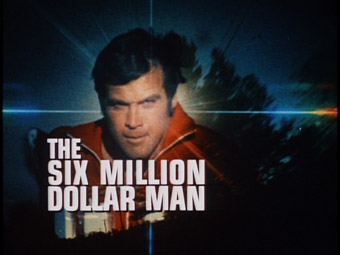
Someone wrote, reviewing the DVD release of the Starsky And Hutch TV box sets, "Who can remember any of the cases that Starsky and Hutch solved?" They had a point. We didn't tune in to marvel at any Holmesian deductive reasoning. We watched the show because the leads were effortlessly charismatic and shared a chemistry that was a joy to witness. Applying the same criteria to another of my childhood favourites, could I remember a single adventure from all five seasons of The Six Million Dollar Man? I have one powerful visual image from (I assume) the pilot. Austin has just saved someone doing his heavy lifting thing with a car and ripped his arm open in the process. I think he saved a woman (after viewing it again yesterday, it's actually her son he saves) who in turn is horrified at his robotic nature and the pilot allows us (and Steve) a bit of introspection. He sits on a table, arm ripped open, wondering if he really wants to embrace the idea of being a bionic man. It was the closest the show ever got to profound philosophy given the simplistic nature and strong streak of cheese that the show then went on to embrace.
As Slarek has already reasoned, a genuine Cine Outsider length review is not feasible for this many episodes and I have had only half a dozen to jack myself in to memories and experiences of my childhood self, but it has been a warm connection despite the shows not quite standing up to 2012 scrutiny. For those of you unfamiliar with the series, Colonel Steve Austin crashes an experimental aircraft in the front credits only to be rebuilt with his super strength legs, right arm and an over endowed left eye. He became the bionic man and set 70s dreamers pulses racing. Playgrounds were full of children (mostly boys in my experience) making that silly electronic 'du du du du du du...' sound that meant some bionic action was performed onscreen while pretending to fight in slow motion. Now, the slow motion aspect of the show has become its defining trait and let's be charitable and suggest it may have been overused. The programme-makers, with the scant resources open to them at the time, obviously came to the same conclusion that Richard Donner would later come to that decade in trying to show Superman as a boy running super fast. To our eyes, it just looks utterly ridiculous. With a decision bordering on televisual genius, the makers of the show chose to show super fast as super slow, a visual code of extreme speed. The only aspect that mars its rightful place as one of the best ways to solve a visual problem is its unconscionable ubiquity. Together with the bionic sound effect and the slow motion, we are sometimes being asked to believe that Steve Austin's basic movements are in some way enhanced and that cheapened the effect somewhat. But hey, I was 12 years old. Austin was a god to me then.
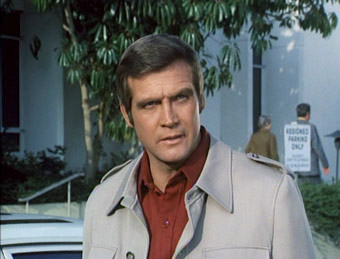
Lee Majors was everything a man was supposed to be in the eyes (both functioning) of a Brit schoolboy who yearned for adventure. In the cinema there was Sean Connery of hirsute chest as my big screen hero. My TV champion shared that trait so there was obviously something very manly and adventurous in having chest hair, something that still evades me forty years later. Majors is impossibly American in demeanour and graduated from the Roger Moore Academy of Eyebrow Thespianism. Physically he was a perfect spaceman (if your definition matches mine in very broad ways) if a little restrained when it came to actually emoting. The one imperfection on that rugged face was the nose. Someone had forced an M&M right down to his nose's tip which gave you the impression (!) that Majors was acting with a pane of glass just that inch too close to his face. Don't think of these as pot shots (I already said the guy was damn near perfect). Think about the amount of time I watched this guy in action and in extreme slow motion. I knew more about the way he moved than I did about most of my friends. And the bastard then went and married the 'it' girl of the 1970s, Farrah Fawcett, she of the impossibly white teeth and hair that looked like four Shih Tzu puppies Morris dancing. In celeb terms, their union was the 70s equivalent of today's Brangelina.
Speaking of champions, the series of the same name broadcast in the UK in 68 and 69, was markedly similar to The Six Million Dollar Man. Both featured super human protagonists; the two used well-worn FX tricks to tell their stories (back projection, printing shots backwards etc.). Both relied heavily on stock footage to beef up the narratives when there was no money to actually shoot in Saudi Arabia; they shared signature sound effects when their powers were in use and both – from a child's perspective – were contingent on the powerful desire to see bad people get their comeuppance and be shocked at the power of their enemies at same time. In that respect I was a perfect audience member for both shows. Remembering the pilot of The Champions turns certain pleasure centres of my brain onto 11 (all that snow, black polo necks and mysterious Tibetans endowing superhuman strength and telepathy to our three heroes). I feel a glow inside just thinking about it.
Two things I don't recall with great clarity that came through on the limited number of shows I've had to re-view; firstly, there's the sheer physical effort that went into each show's production (you see a helicopter try to take out Steve, that's a real helicopter with some seriously expert flying). I know the stunt guys were a little obvious sometimes but that's also part of the show's charm. It's locked in a 70s mode with little that could survive and puff its bionic chest out to show off about in 2012. Given that, it's amazing to me how easy the shows are to watch when any formal examination of them would yield nothing but embarrassment. There are also scores of actors who pop up quite surprisingly in the show, faces without easily to hand names, faces that are as familiar as your old teachers' were.

The second of the two things of which I have no recollection is the quality and content of the dialogue. This was light adventure but still the writers found time to cater to those with an ear for the risqué. The series featured some of the most outrageous double entendres that Benny Hill may have blanched at. This may be unfair as most of the offending ones come from just two of the half dozen or shows I've watched but still... As a young boy, these would have sailed, zephyr powered, right over my head. Just take a look at these two.
"I think I understand better why they say American men are soft..."
"Well, like I said, we rise to the occasion..."
...and my favourite in lack of taste (ahem...)
"Sorry I had to violate your porthole."
I mean, James Bond would never apologise for violating anyone's porthole but come on. Is it me or is that sailing a little close to the Hay's Code wind? Steve had just ripped off a real porthole in front of Britt Ekland but still. It's the use of the words 'violate' and 'your' that smart.
There were also aspects of some of the scripts when I sat there open mouthed at their blatant stupidity. But again, it had the effect of being entertainingly charming and not crass at all. After a ridiculous explosion outside a parapsychologist's office (where Steve has announced with manly certainty "How can I have seen my spirit. I don't even believe in 'em!") Steve rescues the damsel and a fire chief 'explains' the explosion away with this bit of wonderful screenwriting.
"He left a container of highly volatile materials in a hall just outside your office door. It blew up! Well, that's the way most accidents happen... When will they ever learn?"
Oh, man. If ludicrousness is entertainment then keep it coming. I imagine the entire five series is full of such small pleasures and if that is a guarded recommendation then so be it. This is a box set almost exclusively for nostalgia fans and like me, there are a fair few of them about. I can't see anyone under 21 in 2012 taking one look at a ruggedly handsome man running in slow motion and saying "Awesome!" As ever, I'm happy to be wrong.
It's hard to recall specifics, but I remember being every bit as obsessed with The Six Million Dollar Man as my fellow reviewer when I was a young boy. We all were back then. Steve Austin was essentially the first TV superhero of our generation – you had to go back to the 1950s and The Adventures of Superman to find an appropriate predecessor, and Austin was not a Kryptonian but an ordinary guy (actually, as an ex-astronaut who had walked on the moon, ordinary is stretching it) who had been transformed by technology. We identified with Steve Austin because in the right circumstances we imagined that we could be him. You've fallen off your bike and injured your leg? Gentlemen, we can rebuild him. Then try and push me around in the playground – I'll plant my new bionic leg so hard in your arse you'll be wearing it for a bonnet. We ran like Steve making bionic noises as we did so, pretended to lift heavy objects in ultra-slow motion, and pretended we could see things from half a mile away with our bionic eyes. Oh yes, we were obsessed all right.
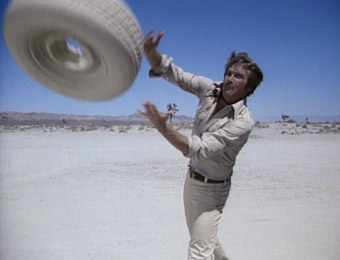
It was the arrival of martial arts films that saw my allegiance shift. Who needed an American cyborg running in slow motion when you had super-fit Chinese guys who could leap, kick and punch at lightning speed, and all without the air of mechanical enhancement? To become these guys we didn't need to have that bike accident and be rebuilt by scientists, just get in the dojo and train like a bastard, or so we told ourselves. We didn't have the government connections to become Steve Austin, but in our boyhood wish-fulfilment it somehow seemed possible that with the right level of dedication we could become Bruce Lee. For the kung-fu generation, Steve was starting to look rather straight-laced and even a little camp.
A good many years have passed since then, during which I've somehow not caught a single episode of The Six Million Dollar Man on TV or video. I can't imagine why. I was thus keen to see how the show would look today, particularly given how well those martial arts films that lured me away from my former hero stand up. I'll be honest and admit that my hopes weren't that high – my tastes have changed and I've become a lot less fond of those superhero types who, instead of using their powers to rid the world of hunger or poverty, employ them instead to enforce American state policy on domestic and international dissenters.
The first thing that struck me was that, personality-wise at least, Steve pretty much conformed to the picture of him I still carried around in my head. Lacking the cocky charisma of Captain Kirk or the professional cool of the Mission: Impossible team, Steve is a rather straight-laced sort of hero, a clean-cut all-American who uses his powers for what his secret service chum Oscar assures him is good for the nation. It probably doesn't help that leading man Lee Majors was not that big on emotional expression, though he was good at squinting and raising his left eyebrow. From a modern perspective – or rather from my modern perspective – Majors seems an unlikely candidate for superstar status, but back in the 70s he felt like the perfect choice and became as famous as any movie star and a sex symbol of some note – there's even a Simpsons episode where Marge daydreams that Majors will take her in his arms and whisk her away with a bionic leap.
What will probably seem peculiar to younger newcomers is the decision to represent accelerated speed by shooting it in ultra-slow motion. As Camus writes above, this was actually an intriguing solution to the problem of how to show Steve's ability to run at high speed without making him look like a Keystone Cop. And at the time we all bought into it and delighted in emulating his slow motion runs, jumps and fights. Only later did it strike me how peculiar this sometimes looked, and it's thus not that surprising that this was the first aspect of the show to be parodied. Take a step back from the fun of moving really slowly and making that electronic ticking sound and rarely does the super-slow-mo actually make Steve look like he's running at a superhuman pace. This really hits home when it's cross-cut with another activity playing out at normal speed – it becomes nigh-on impossible to imagine how Steve could ever catch up to a car that's belting down the road at 60mph when he's moving like he's buried to his waist in molasses.
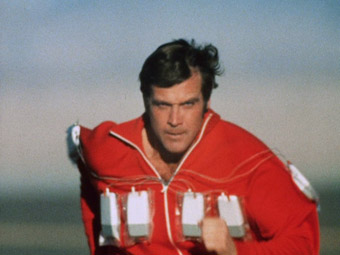
So how else could it have been done? Oddly enough, the technique the filmmakers rejected did have some potential. While speeding up footage does tend to look comical by default, just slightly undercranking the camera to produce a very small increase in speed can have the desired effect without looking silly. We know this because it's used occasionally in season 1 to convincing effect. Of course, with the right leading man – or a perhaps a rigorously trained one – you may not even need such artificial assistance. You want to see an example of superhuman running? Try Robert Patrick chasing Linda Hamilton and her cohorts in Terminator 2, or Daniel Craig belting after the kidnapped Vesper Lynd in Casino Royale. Both men move at bionic speed without any camera undercranking, the sense that we are watching almost superhuman abilities being enhanced by their joint decision to keep their mouths closed while running, an almost subliminal suggestion that moving this fast was not physically taxing for them. And let's not forget those martial arts films that were luring me away from me TV heroes, films whose stars boasted a speed and physical ability seemed genuinely jaw-dropping by then western standards.
Of course, it's all very easy to retrospectively suggest alternatives in an age when CG can enable Spider-Man to hurtle across a city at an insane velocity and not look (too) ridiculous. The Six Million Dollar Man was made in the early 1970s when the majority of effects were done on set or in camera, and in 1974 Steve running in slow motion worked just fine. But even as a child, I began having problems marrying the science fiction of the show's mechanics with science fact of human anatomy and biology. I'd been in a lot of accidents and a fair few fights by the time the series screened, so was becoming very aware of the fragility of the human body, and oddly remember the exact moment when my suspension of disbelief suffered a fatal blow. I was watching an episode where an object heavy enough to reduce a human body to jam was caught just in time by Steve, and I did a small double-take. It struck me at that very moment that while a bionic arm may well have the strength to catch a falling object of body-crushing weight, doing so would rip that arm out of the flesh and bone shoulder to it was attached. And while it's fun to watch Steve lift a car up to enable Oscar to change a wheel, I shudder to think what this is doing to his all-too-human backbone. I put mine out just lifting a TV. The arrival of Jamie Sommers and her electronically enhanced hearing only gave me more problems, as I couldn't for the life of me work out how she could hear a sentence whispered from a couple of hundred yards away without being deafened by the considerably louder noises that were drowning it out. And let's not forget that all of these bionic parts were individually nuclear powered, including Steve's left eye. How do you fancy walking round with that crap in your head?
But did it matter? Not to the vast majority of viewers at the time, myself included. And some elements have survived the ravages of time rather well. Watching large chunks of all five series again after so many years, the super-slow running does look a little daft and almost never conveys any sense of speed, making me wonder repeatedly how we ever really thought it did. The current preponderance of CG and wire work has left the superhuman leaps – staged through a combination of editing (Steve jumps, Steve leaps over the camera, Steve lands) and shot-in-reverse footage of stunt men leaping backwards off ledges – looking a little quaint, but the acts of bionic strength, achieved by constructing convincing metal props out of easily manipulated lead, still work a treat, the slow motion somehow emphasising the power involved in such a feat. And while the fights rarely convince as superhuman combat (can to imagine what a punch from a bionic arm would do to a man's head?), the slow-motion gives them an almost balletic quality that is actually quite entrancing.
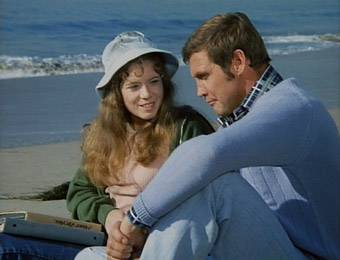
Looking back from a time when film storytelling is often in too much of a hurry, the pace here feels surprisingly easy-going. As Camus has suggested, the plots are rarely memorable and tend to be largely about getting Steve into bionic action, though that's a lot more rationed than I remembering it being. Getting close to the bad guys sometimes meant having Steve go undercover, and fortunately for him he was only ever recognised as an internationally famous moon-walking astronaut by good-hearted people with no criminal intent. For my money, the early episodes are definitely the best, as they tended to have the more interesting villains and more plausible plots. Even when they did drift into science fantasy territory, as with season 2's The E.S.P. Spy,* which sells the concept of extra-sensory perception through solid story development, well written dialogue and some spot-on casting. This is particularly true of Robbie Lee's upbeat young telepath Audrey Moss, and George Patton as the unsettlingly silent and physically damaged Jarecki, a telepath with more than a hint of Jason 143 in the later X-Men 2 about him.
The later embracing of more fanciful elements is where, for me at least, things began to slip. Leading the way was the famed season 3 two-parter The Secret of Bigfoot, in which Steve stumbles across and is physically thrown about by the fabled sasquatch, whose own bionic limbs were fitted by star-travelling aliens. It's well enough handled, just in the wrong series, trading in the show's hitherto plausible speculative science for Outer Limits-style fantasy. But the popularity of this episode and of Bigfoot in particular saw him return in season 4's unimaginatively titled opener, The Return of Bigfoot, and again in season 5 in Bigfoot V, which could well be the dullest and daftest episode of all. Initially played by seven-foot tall French wrestler André the Giant in rather convincing make-up, by Bigfoot V André had been replaced by the shorter Ted Cassidy, dressed in a hairy baggy costume and fitted with a Grizzly Adams beard and pantomime teeth.
It was perhaps inevitable, given the acknowledged Frankenstein overtones of the pilot, that Steve would eventually get a bionic mate. In a double episode entitled The Bionic Woman, a parachute accident leaves Steve's teenage sweetheart Jamie Sommers (played by an altogether more expressive Lindsay Wagner) with her legs, right arm and right ear smashed to bits, prompting Steve to plead with Oscar to rebuild her as they did him. It's a storyline that showcases the series at its best and worst. The episode certainly scores when exploring the emotional consequences of the deal Steve strikes with Oscar to replace Jamie's shattered limbs and her body's later rejection of the bionic implants. But pairing Steve up with his former sweetheart gives birth to a sequence of rank sentimentality in which the signature slow-motion running is transformed into that most mocked of smitten couple clichés, hammered home by a horribly mawkish love song titled "Sweet Jamie", written and sung by Lee Majors himself.
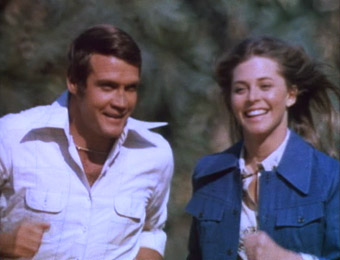
This aside, Jamie proved a solid and likeable character who struck enough of a chord with fans for her to be brought back from the dead for another two-parter, The Return of the Bionic Woman, and eventually get her own series. The Bionic Woman ran concurrently with The Six Million Dollar Man and even featured three crossover storylines, a relatively new concept in which a story began in one show was concluded in the other (or in the case of three-part Kill Oscar, bounced back and forth between the two). Fortunately, we were spared a series built around Andy Shefield, aka The Bionic Boy, who, like seemingly everyone rebuilt with bionics is fitted with two new bionic legs. No-one ever lost just one leg, a doubtless conscious decision by the filmmakers to avoid having to deal with the problem of showing a person fitted with a single bionic leg chasing villains. Presumably they'd have hopped in ultra slow-motion.
The Six Million Dollar Man is in many ways a show of its time and place, heralded by Steve's sometimes shocking dress sense and show's universal television lighting. For this childhood fan it hasn't aged as well as the aforementioned Mission: Impossible, a series whose focus on plot mechanics and the ingenuity of its team remains as fascinating as ever. The continuing public affection for The Six Million Dollar Man feels driven more by nostalgia than the longevity of the show, but there's nothing wrong with that. For those of us old enough to have watched it when it was first screened, rediscovering it is like revisiting one of the more pleasurable aspects of youth. And in some ways it really was ahead of its time, a pioneer of superhero television whose technological base has since found a basis in scientific fact (there was a recent BBC article on just this subject here), and its bloodline can be traced to more adult orientated but equally iconic works such as Robocop, The Terminator and Blade Runner. There's even an episode (the first season's Burning Bright) that anticipates a key plot element of Star Trek IV: The Voyage Home – how appropriate, then, that the guest star of that particular show was Star Trek's William Shatner. And for all my adult cynicism, The Six Million Dollar Man remains a hugely important and still entertaining show, one whose impact on our respective childhoods can be measured by the fact that, despite being geographically a couple of hundred miles apart, both Camus and I have been recently driving our loved ones potty by moving around our houses in ultra slow motion and making "du-du-du-du-du-du" noises in sync with our actions.
On the whole, very impressive. There is some variance, occasionally even within the same episode, but the best material is of excellent quality, free of dust and dirt and boasting a spanking level of detail for a DVD transfer. The aforementioned universal TV lighting ensures the contrast range and colour rendition are both consistently good, even at night. The aspect ratio is the original 1.33:1.

The Dolby 2.0 mono soundtrack is a generally solid job, but is subject to sometimes extreme variations in quality and clarity. This is dramatically demonstrated in the opening few minutes of part 1 of Kill Oscar, where after a moment of relative clarity, the sound level drops dramatically and becomes so muffled you'll be struggling to make out the dialogue, then after a couple of minutes suddenly snaps back to normal.
English subtitles for the hearing impaired are provided for every episode.
One small request I will make to those putting these DVDs together: please, please set the bloody music on the DVD menu to the same level as the content. The menu sound level is almost double that of the shows themselves, and can deafen you if you have the amplifier crancked up when an episode concludes.
The discs themselves are divided into the five series that the show ran for, with five further discs devoted solely to bonus features. The last disc of each series is also partly or completely given over to extras, and there are a small number of others tucked away in the series themselves. These include all of the Bionic Woman crossover episodes, which you'll need to watch to make any sense of the corresponding episodes in The Six Million Dollar Man. As these are effectively series episodes I've not covered them as extras, but for the sake of detail, they are:
- Welcome Home Jamie – Part I
- Welcome Home Jamie – Part II
- The Return of Bigfoot – Part 2
- Kill Oscar – Part I
- Kill Oscar – Part III
The rest of the extras will be listed by the disc on which they appear.
Given that this is a complete box set, it's difficult to be sure whether to classify the six full length movies included here (it just had to be six, didn't it) as extra features or as part of the series. This is especially true of the first thee movies, which are presented both as chronological pre-runners to the series proper on the discs 1 and 2, and again on the bonus discs in their two-part syndicated versions. But given their tonal differences from the series proper, they deserve special attention.
Season 1, Disc 1
Pilot Movie 1: The Moon and the Desert (74:08)
The first of the pilot movies is also the best. It sets up the story and its leading players, though if you're coming to it retrospectively after watching the series then there are a few small surprises here, most of them pleasant. It's here that we get to see former astronaut turned comically cocky test pilot Steve Austin (he arrives late for a flight with his thumbs hitched on his belt, a swagger in his step and a toothpick in his mouth, and all but ignores the military brass) transformed into the cyborg around which the series was based. What really surprises is how much of the 74-minute running time is devoted to Steve's transformation, recovery and mental adjustment, and how compelling it proves to be. It also gives a flavour of a darker direction the series could have taken, with an almost suicidal Austin initially rejecting the idea of the proposed bionic limbs and at moral odds with morally suspect government project funder and overseer Oliver Spencer, for whom he is initially reluctant to work. Lee Majors aside, the main cast here are sadly a one-off deal. Darren McGavin makes for an impressively shifty Oliver Spencer, a dark-dressed and physically damaged morality vacuum who is everything the upright and later bionic Steve is not. And Dr. Rudy Wells, a close friend of Steve's and the man whose technology is used to rebuild him, is here played by the excellent Martin Balsam. A solid first movie that, perhaps a little ironically, only loses its grip when Steve hops off to the Middle East to put his new limbs into action, a hurried and somewhat flatly handled bolt-on to an otherwise worthwhile drama.
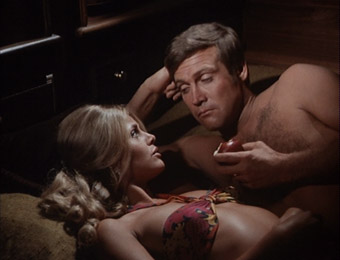
Pilot Movie 2: Wine, Women and War (73:47)
There's a notable shift in tone in the second movie, whose opening scenes attempt to reinvent Steve as an American James Bond. Standing on a balcony at a plush dinner party and dressed in a dinner jacket that doubles as a wetsuit, he signals a submarine and then breaks off to mouth calm assurances to an attractive Russian girl who hangs on his arm. Even the music plays like low rent John Barry, but Steve being Steve he has more than his wits to rely on, diving from a cliff top and swimming like a torpedo, which hoodwinks the enemy and bemuses the US Navy. Initial signs that the Russians are being set up as the bad guys are refreshingly usurped when both they and their decadent American cousins are shown to have been hoodwinked by the same Bondian super-villain. A most engaging David McCallum revives his Man From Uncle accent as Steve's long standing Russian friend and comrade Alexi Kaslov, but there is a tackier feel to much of what unfolds here, not helped by a ghastly, disco inspired score and a theme song that really has to be heard to be believed.**
Season 1, Disc 2
Pilot Movie 3: The Solid Gold Kidnapping (73:42)
Cursed as it is with the same annoying score and tacky opening sequence as its predecessor, the third film plays a little like part two of the second movie, though David McCallum and Britt Ekland have been replaced by a very capable John Vernon and Elizabeth Ashley. The more overtly Bondian elements are toned down a little, but Steve still gets to globetrot and deliver a few double-entendres: "Do you get up to Aspen often?" asks the pretty girl he is in bed with, to which he replies suggestively, "I try to get up as often as possible." Oh ha ha. The idea of transferring memories by injecting the brain cells of a dead man into a living woman is intriguing, if a little fanciful, and the concept of a crime organisation that functions more as an international conglomerate, complete with a board of criminal directors, is one worthy of further development. Keep your eyes out for a security guard played by James B. Sikking, a then bit part actor who eight years later hit the TV big time as Howard Hunter in Hill Street Blues, whose co-creator Steven Bochco was an uncredited contributor to the screenplay for The Moon and the Desert.
Season 1, Disc 6
Real Bionics (12:04)
A brief but interesting look at how the real world of bionics is slowly catching up to the speculative science of The Six Million Dollar Man, given weight by the contributions of Ian Fothergil and Karl Lindborg, both of whom work in this very area. Demonstrations of a bionic arm and leg are included, though are quite possibly already looking a little old-fashioned.
An Iconic Opening (18:58)
Main title director Jack Cole, episode director Jerry London, producer Harve Bennett and others explain in fascinating detail how the show's iconic title sequence was designed and constructed. Particularly exciting was the news that the false leg used for the operation shot was one made for Clint Eastwood in Don Siegel's The Beguiled.
Season 1 VIPs: A Celebration of The Six Million Dollar Man Guest Stars (12:22)
A look at the notable guest stars in series 1, who include Gary Lockwood (2001: A Space Odyssey), Greg Morris (Mission: Impossible), Farah Fawcett, Noah Beery (The Rockford Files), Star Trek stars William Shatner and George Takei, and the lovely John Saxon. There's one of these for every season and they're particularly useful for a modern audience who may nowadays have trouble placing these once famous faces.
Bionic Breakdown
A textual description and technical breakdown of Steve's bionic parts.
OSI Mission Debriefing: Executive Producer Harve Bennett (75:07)
Producer Harve Bennett reveals how he became attached to the series and takes us on a detailed journey through his time with the show. He discusses his desire to restore public faith in the heroes of his youth and give the show an underlying sense of patriotism, and also reveals that Lee Majors reminded him of Elvis. Really? It's a long interview that series devotees should get plenty out of, but Harve's good natured but sometimes dry delivery is likely to prove heavier going for the more casual viewer. This is also the source of Bennett's contributions to the many other featurettes in this set, so you'll find a lot of this is repeated more economically elsewhere. Think of this as an extended version of those interviews.
Bionic Gallery (7:24)
A rolling gallery of production still from season 1. Surprisingly, there's no accompanying music. Feel free to hum as you watch.
Season 2, Disc 5
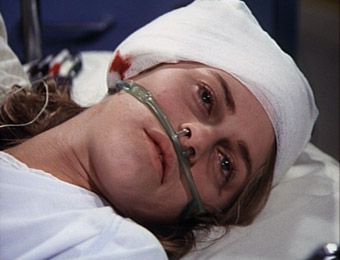
Commentary by Kenneth Johnson on The Bionic Woman
The lively and talkative Johnson delivers a detailed commentary on both episodes of The Bionic Woman two-parter, providing a small wealth of information on cast and crew members, the shooting of individual scenes, his involvement in the production, and a whole lot more. He even provides a few film school basics on why specific shots are used, useful for those not familiar with the technical aspects of the craft.
Season 2, Disc 6
Featurette – The Bionic Sound Effects (11:08)
Fans and filmmakers celebrate the iconic "du-du-du-du-du-du" bionic strength sound that just about everyone who knows the show instantly recognises and has probably emulated. Series fan website founder Joseph Burns charts the development of the bionic sound effects and reminds us that the first time it was used was not for Steve at all but for the robot (or "rubut" as he is referred to by Henry Jones in a Dr. Zoidberg-like pronunciation) played by John Saxon in Day of the Robot.
Season 2 VIPS (15:08)
The guest stars of series 2 get a nod, and include boxer George Foreman, Martha Scott and Ford Rainey as Steve's mum and dad, Cliff Osmond, Dick Van Patten, Farrah Fawcett (again), Lindsay Wagner, Robert Ito, Pat Hingle, Donna Mills and Monte Markham, who was originally slated to play Steve Austin but instead guested as the pricier Seven Million Dollar Man.
Bionic Gallery (4:50)
Another silent rolling gallery of production stills, this time from season 2.
Season 3, Disc 3
Commentary by director Cliff Bole on Blue Flash
A laid back Cliff Bole – who adds to the series' Star Trek connections by later becoming a regular director on Star Trek: The Next Generation – proves every bit as interesting as his former colleague Johnson. He reveals how this episode allowed him to make the move into the director's chair ("Give it to the kid"), recalls working with Harve Bennett, Lee Majors, Richard Anderson and others, relates a few interesting snippets about the production (they always carried false telephone boxes when going on location so that scripted calls could be made anywhere) and gets a little tearful when recalling Farah Fawcett, who died of cancer in 2009.
Season 3, Disc 5
Audio Commentary by writer Kenneth Johnson on The Secret of Bigfoot
Not my favourite double episode by any stretch, but the ever-enthusiastic Johnson still makes this a worthwhile listen. As on his previous commentary, he provides an almost encyclopaedic level of information on the actors, crew members and locations. The info on André the Giant (who plays Bigfoot) is of particular interest – we may hear more than we need about his wrestling gigs, but I was strangely delighted to learn that he was Samuel Beckett's neighbour. Johnson outlines his approach to writing for television (his CV is genuinely jaw-dropping) and provides some interesting background on the shooting of specific scenes, but also groans a little at how budget restrictions and the tight shooting schedule have given some sequences a Mystery Science Theatre feel that he never intended.
Season 3, Disc 7

Featurette – The Search for Bigfoot (13:19)
Fans and filmmakers discuss the frankly bemusing popularity of the Bigfoot episodes. Herbie J. Pilato of The Classic TV Preservation Society suggests it was because he was campy and fun, and perhaps even cuddly and loveable. The fact that he was also a little preposterous seems to bother no-one. Kenneth Johnson talks about casting and working with André the Giant, and Lee Majors' stunt double Vince Deadrick Jr. recalls just how big this guy was.
Season 3 VIPS (15:52)
This season's guest stars include Erik Estrada (later to hit the big time as officer 'Ponch' Poncherello on CHiPs), Pernell Roberts from Bonanza, singer Sonny Bono, Noah Beery from The Rockford Files, Louis Gossett Jnr. (later an Oscar winner for An Officer and a Gentleman), a pre-Soap Katherine Helmond, Stephanie Powers, Cathy Rigby and, of course, André the Giant.
OSI Mission Debriefing: Writer and Producer Kenneth Johnson (87:39)
The lively Johnson appears a lot in the featurettes, and you'll find all that and more in this feature-length interview that once again plays like an extended version of his contributions elsewhere. Johnson is full of interesting stories, and his energy and enthusiasm make this an easy and entertaining watch, and he nails the appeal of the series better than anyone else here.
Bionic Gallery (6:34)
A rolling gallery of series 3 production stills, all zooming in slowly.
Season 4, Disc 4
Audio Commentary by director Cliff Bole on Vulture of the Andes
Despite a few dead spots, director Bole growls out some interesting stories about the shooting of this episode, his work on the series, and his film industry background. He admits that the opening titles still give him goose bumps, and describes Lee Majors as "a hunk", Cyborg author Martin Caidin as "crazy", and the Six Million Dollar Man crew as the best he's ever worked with. In an interesting barometer of pre-9/11 American attitudes to terrorism, he at one point observes that in 1975 "the word 'terrorism' didn't have the bite that it has today." It bloody well did in Europe, mate.
Season 4, Disc 9
Featurette – The Six Million Dollar Fans (13:54)
Series fans talk about the appeal of the show, while the filmmakers recall their surprise at the dedication and longevity of its fan base. Perhaps unsurprisingly, producer Harve Bennett's experience of series fandom has been eclipsed somewhat by his tenure as executive producer of the Star Trek movies.
Season 4 VIPs (16:20)
Season 4's guest stars include Dana Elcar (MacGyver), comedian Flip Wilson, the great John Houseman (who plays an evil scientist who creates 'fembots', a term recycled by Austin Powers), Ray Walston (My Favourite Martian), Dick Sergent (Bewitched), Disney girl Sandy Duncan, Leslie Moonves (later to become the über-rich President of CBS television), a young Kim Bassinger, and Steve's new moustache.
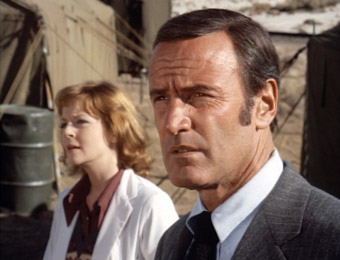
OSI Mission Debriefing: Richard Anderson (52:37)
It's the turn of actor Richard Anderson, who plays Oscar Goldman, to get the unabridged interview treatment. A gentle but interesting talker, Anderson has more than enough entertaining recollections to fill an engaging fifty-two minutes. Working with Lee Majors and Lindsay Wagner figures prominently, as well it might, given that he was working simultaneously on both The Six Million Dollar Man and The Bionic Woman.
Bionic Gallery (1:04)
The briefest rolling gallery so far.
Season 5, Disc 7
The Six Million Dollar's Best Villains and Fights (17:24)
Best villains? No problem. Best fights? Erm... At the risk of provoking hardcore fan ire, for my money the fights are usually one of the weaker elements of the series. Slowed down to the speed they are, the movements are elegant but their fakery a little too easy to spot, and the majority of these encounters look exactly what they are, Lee Majors and the stunt team running through a fight sequence. There's also rarely a sense that Steve is hitting or kicking any harder than the average healthy dude, and in many cases is able to throw his opponent only a couple of feet, usually with their assistance. But the villains, or at least the human ones, are well worth revisiting.
Season 5 VIPs (13:21)
Some notable guest stars in season 5 include Jenny Agutter, Robert Loggia, Suzanne Somers (Three's Company), Eric Braeden (The Forbin Project), John De Lancie (later to play Q on Star Trek: The Next Generation), Bibi Besch (later to play Kirk's wife in Star Trek II: The Wrath of Khan – those Trek links keep appearing), actor and singer Rick Springfield, and Cyborg author Martin Caidin.
Bonus Disc 1
Reunion Movie 1: The Return of the Six Million Dollar Man and the Bionic Woman (98:09)
The first of the reunion films, made a few years after the series was cancelled and when the three lead players where trotting visibly into middle age. Although apparently popular with hardcore fans, for this everso slightly more jaded viewer the first proves rather hard work from the off, a by-the-numbers American TV troubled family drama, in which Steve is revealed to have an adult son named Michael (engagingly played by Tom Schanley) and struggles hopelessly to express his affection for a seemingly disinterested Jamie Sommers. From the moment of their first bust-up this seems designed to end (two movies later, as it happens) in bionic wedlock, which wouldn't be such a problem if the filmmakers were not so attached to the cheesy sentimentalist school of emotional expression. In a painfully unimaginative twist, Michael is critically injured whilst piloting an Air Force plane (one that would have fried him in a fireball if the stock footage is to be believed) and loses the exact same body parts as his dad, landing him with two bionic legs, one bionic arm and a single bionic eye, the operation allowing Steve to rerun his bedside anxiety piece from The Bionic Woman. Of course, time having moved on, Michael can run considerably faster than his dad, and his eye houses a laser that can cut through metal. Oooo.

Reunion Movie 2: Bionic Showdown The Return of the Six Million Dollar Man and the Bionic Woman (95:48)
Having spent a good part of the previous movie emotionally reconnecting Steve with his estranged son, the second one all but ignores Michael's existence. Nice. Instead we have Kate Mason (engagingly played by fresh-faced young newcomer Sandra Bullock), a young aspiring athlete with a congenital muscular disease that has confined her to a wheelchair and who has volunteered for a new bionic procedure that will allow her to run like the wind. The new bionics are directly integrated into her system on a blood vessel and bone level, an intriguing concept worthy of development, but despite the considerable speed advantage this gives our Kate, she is somehow still allowed to compete in international athletic games on the promise that she won't use her powers to beat her bitchy and self-satisfied Russian opponent. Yes, despite the glasnost overtones, old prejudices die hard here, expressed in Oscar's contempt for the Russian delegates at the opening social expression of the new detente. Kate's implants include a bionic eye that gives her instant computer access, borrowing directly from The Terminator, a film that the series is acknowledged to have influenced.
Bonus Disc 2
Reunion Movie 3: Bionic Ever After?
Originally titled Bionic Breakdown, the third and final Six Million Dollar Man movie is better all round, boasting a more interesting set of villains (a SWAT-dressed terrorist group who invade the American Embassy in the Bahamas), a far less abrasive music score, and a touchingly low key acceptance that age eventually catches up with even the most bionic of individuals. Hardcore fans may be irked by the lack of bionic action, but compensation aplenty is provided by some decently staged set-pieces, self-confident terrorist leader Miles Kendrick (Geordi Johnson), a smart performance from Farrah Forke as tough but troubled OSI agent Kimberly Harmon, and the nifty idea that Jamie and Steve could be disabled by infecting their bionics with a computer virus.
The Moon and the Desert (Syndicated Version of TV Pilot Movie 1) (47:04 and 49:03)
The first TV movie as it was shown on syndication, split into two episodes with the original's horrible title sequence replaced by the one we all know and love. Small bits of additional footage have also been added to pad both parts out to full episode length, most if not all of it purloined from later episodes (including shots of Martin E. Brooks as Rudy Wells, a character that is played by Martin Balsam here).
Bonus Disc 3
Wine, Women and War – Part I (48:56)
Wine, Women and War – Part II (49:07)
The Solid Gold Kidnapping – Part I (49:00)
The Solid Gold Kidnapping – Part II (49:02)
The syndicated versions of the second and third movies, also with borrowed extra footage.
Bonus Disc 4
TV Goes Bionic: the Origins of The Six Million Dollar Man (11:27)
Some of the series' key players reveal how the series came about. One of the key changes made to Martin Caidin's source novel Cyborg is briefly discussed (Lee Majors was too nice a guy to play a killing machine), and Harve Bennett reveals that the first movie, which he thinks was the best (no argument here), was partly the work of an uncredited Steven Bochco.
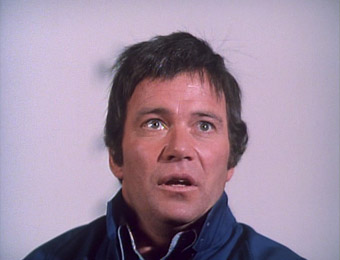
The Bionic Age of TV: The Success of The Six Million Dollar Man (24:42)
The above contributors are joined here by more of their former colleagues, including actress Lindsay Wagner and scriptwriter Kenneth Johnson, to collectively tell the story of the show's development and success. The introduction of Jamie Sommers gets detailed coverage, and I was intrigued to learn that the decision to kill her off (only to have to revive her later due to fan backlash and a look at the ratings the episode scored) was inspired by the weepy ending of the hugely successful Love Story.
Top Secret: OSI, NASA and Bionics (10:57)
Cast and crew discuss the science of bionics and the unprecedented level of cooperation they received from NASA – who apparently loved the show – on the episode The Dark Side of the Moon, while fans reveal which bionic enhancement they'd like the most.
The Reunion Movies: Life After the Series (23:31)
A chronological look at the inception and production of the reunion movies, all of which were apparently kicked off by actor Richard Anderson. One for the true fans – given my view of the first two of these films, I found it impossible to warm to the accolades being piled on them here, though there are still a few interesting background details.
In a section of their own are four Meet the Cast featurettes focusing individually on Lee Majors & Steve Austin (11:54), Lindsay Wagner & Jamie Sommers (14:36), Richard Anderson & Oscar Goldman (18:55) and Dr. Rudy Wells (13:23), who was initially played by Martin Balsam, then Alan Oppenheimer, then Martin E. Brooks in the series proper. I recognized enough of the material here to know that much of it was sourced from the feature-length cast and crew interviews, but there are still some participants – Lindsay Wagner and Martin E. Brooks included – whose contributions are confined to these featurettes, all four of which provide concise looks at their chosen character and actor.
Bonus Disc 5
The Pop Culture Effect (12:42)
The actors, filmmakers and fans assess and occasionally overestimate the impact of the series on pop culture and subsequent series and films. These range from Robocop to Family Guy, and even a number of commercials, a couple of which Lee Majors himself appeared in (which we can presume copyright issues prevent us from seeing here).
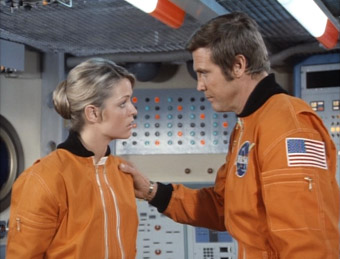
Bionic Action...Figures!!! (21:09)
Now you're talking. Series contributors and fans enthuse over the show's spin-off merchandise, which included lunch boxes, board games and what we now know as action figures, which the fans enthusiastically demonstrate the workings of. I really warmed to this, having accumulated a number of such objects from various films and TV series over the years, and I got a recollective thrill at the sight of a Steve Austin doll with interchangeable limbs and whose right eye was a lens that gave you a sort of half-arsed bionic vision when you looked through the back of his head. I'm sure I never had one of these but someone I knew must have, because I definitely played with it. And there was a John Saxon doll! Brilliant fun.
The Stunts of the Bionic Age (21:32)
A tribute to the series' perpetually busy stunt team, one that highlights Lee Majors' fondness for doing his own stunts (pre-empting his next big TV hit The Fall Guy just a little). Specific sequences are discussed in detail, including the fight with John Saxon and the one time where Majors genuinely froze with fear. It's hardly surprising – he was balanced on the wires between two cable cars at a genuinely lethal distance from the ground.
OSI Mission Debriefing: Lee Majors (84:30)
It seems only right that the second longest interview is conducted with the series' still good-looking and thoroughly engaging leading man, and that it's effectively the climactic extra feature of the set. Highlights include working with André the Giant (he could drink a crate of beer without a single toilet visit, even when Majors and his practical joking chums laced it with diuretic), the help given by NASA, a gag he played on his stunt double Vince Deadrick, the industry lesson he learned from Barbara Stanwyck, his inability to stop raising left eyebrow, his relationship with wife-to-be Farrah Fawcett, and a whole lot more. To get the best out of this, I'd watch it first with a beer and your feet up after finishing with the episodes – it's entertaining stuff but a lot of it is recycled in other featurettes.
There can be few people of my generation who were not touched by the show in some way and would not instantly recognise that electronic ticking that accompanies the bionic action. Hugely influential, it quickly become part of pop culture and has stayed that way since – honestly, a TV news report describing a man who is able to walk again with the aid of exoskeleton technology as "the real bionic man" is playing as I type this – and whose cult status appears to have landed it a new young and appreciative audience. That it doesn't work quite as well for us as it did in our youth is ultimately irrelevant, as few are going to fork out for a 40-disc box set on the vague hope that they might like what lies within. This is one for confirmed fans of the series, and frankly they couldn't ask for more than is served up here. Every episode, every movie, and a ton of quality extra features. It's a Six Million Dollar Man devotee's wet DVD dream, and if you consider yourself a fan then you just have to have it. Start saving now.
* In what has to count as a quality blip, the concept of ESP is less convincingly handled in season 1's Operation Firefly, though the bad guys were still impressive.
** Sung by Dusty Springfield, it will come as a particular shock to anyone familiar with the excellent title sequence that adorned the series, and includes the lyrics: "He's the maaaan! Six Million Dollar Maaaan! Catch him if you can, beat him if you can, love him if you can..." Just horrible.
|